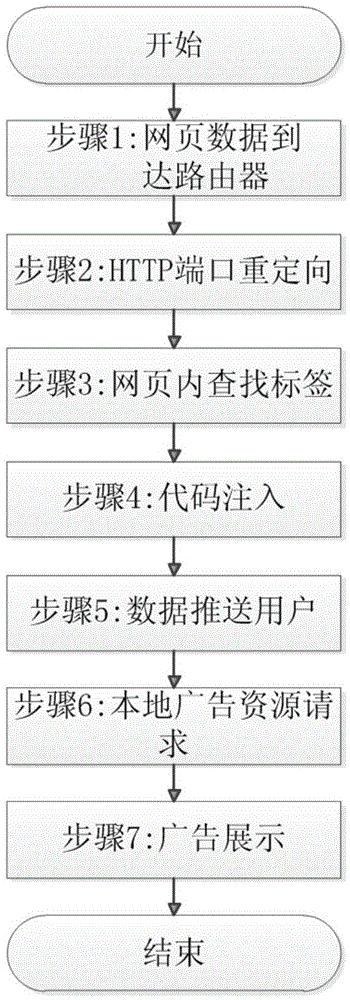Method for injecting advertisements based on Openwrt router
A router and advertising technology, which is applied in the field of embedded software design and intelligent router, can solve the problems of large user influence and inconvenient local management, and achieve the effect of fast access speed and convenient modification
- Summary
- Abstract
- Description
- Claims
- Application Information
AI Technical Summary
Problems solved by technology
Method used
Image
Examples
Embodiment Construction
[0015] The present invention will be further explained below in conjunction with the drawings.
[0016] The technical scheme of the present invention is divided into two parts. The first part implements Web services at the local end of the Openwrt router to realize local storage of advertisement resources and access in the local area network; the second part is to realize the injection of specified advertisement content in the local area network, using the system's own The network firewall performs port redirection to realize the unified management of user access data. By parsing the HTML data returned by the website, searching for designated tags and performing replacement operations, the modified data is pushed to the users in the local area network to realize the advertisement code in the web page. Injection and display of advertising content on the user’s browser within the local area network.
[0017] 1) Implementation of the local web service of the router
[0018] The Openwrt...
PUM
 Login to View More
Login to View More Abstract
Description
Claims
Application Information
 Login to View More
Login to View More - R&D
- Intellectual Property
- Life Sciences
- Materials
- Tech Scout
- Unparalleled Data Quality
- Higher Quality Content
- 60% Fewer Hallucinations
Browse by: Latest US Patents, China's latest patents, Technical Efficacy Thesaurus, Application Domain, Technology Topic, Popular Technical Reports.
© 2025 PatSnap. All rights reserved.Legal|Privacy policy|Modern Slavery Act Transparency Statement|Sitemap|About US| Contact US: help@patsnap.com

